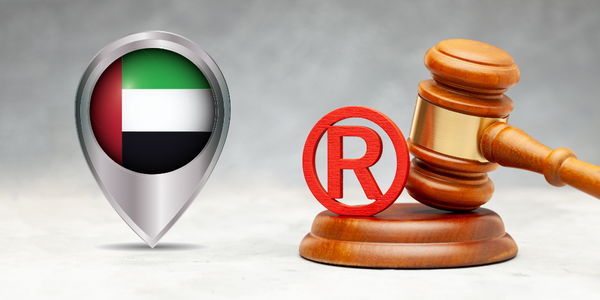Why the Middle East Is the Next Big Market for Global Brands

For decades, global brands have looked to North America, Europe, and parts of Asia for growth. These markets are mature, competitive, and in many cases, saturated. But a new frontier is emerging, and it's not just a trend.
The Middle East is fast becoming a key focus for global businesses.
The reason? A rare blend of untapped potential, rising consumer power, digital transformation, and a hunger for premium, global experiences. It’s no longer just about oil wealth. It’s about a modern, diversified economy that’s beginning to take shape in cities like Riyadh, Dubai, Doha, and beyond.
Rising Wealth and Consumer Sophistication
Some of the world’s highest-income consumers live in the Middle East. But the real story lies beyond high-net-worth individuals. The region is experiencing significant growth in its upwardly mobile middle class.
Consumers here are young, tech-savvy, and brand-conscious. They follow global trends, but they also want something more, products and services that respect local identity while offering global quality.
In places like Saudi Arabia, over 60% of the population is under 35. That’s a lot of purchasing power waiting to be tapped. And these young consumers aren't just spending. They’re influencing. Through social media, fashion, travel, and tech, they’re setting new expectations, and they’re not shy about demanding the best.
A Region in Reinvention
Several Middle Eastern countries are actively rebranding themselves. Vision 2030 in Saudi Arabia is a prime example. The initiative aims to diversify the economy, reduce dependence on oil, and create a more open, service-driven society. This includes investments in tourism, entertainment, retail, and infrastructure.
The UAE remains at the forefront of industries such as fintech, aviation, and luxury. Qatar is investing billions post-World Cup to expand its global role in business and sports. Meanwhile, Oman and Bahrain are quietly transforming their regulatory environments to become more investor-friendly.
This wave of reform is good news for global brands as governments are actively welcoming foreign investment. The playing field is being leveled, and that means fewer barriers to entry for international players.
Digital-First, Mobile-Driven
The Middle East ranks among the most digitally connected regions globally. All thanks to smartphone penetration, which is extremely high. In short, e-commerce is booming. Instagram, Snapchat, and TikTok are key platforms capturing the attention of Gen Z and millennial audiences.
Digital payments are becoming the norm. Logistics infrastructure is catching up fast. In Saudi Arabia and the UAE, same-day delivery is becoming an expectation, not a perk. This shift is creating fertile ground for DTC (direct-to-consumer) brands and digital-native verticals.
Moreover, consumers in the region are highly responsive to digital storytelling. Digital presentation has become a key driver of brand perception in today’s market. Authenticity matters, but so does quality and aspirational value.
Local Culture, Global Ambition
One of the key opportunities for global brands is the ability to localize without losing their identity. This region rewards brands that make an effort to understand and reflect its culture.
For example, modest fashion is not just a niche anymore, it’s a billion-dollar market. Halal beauty is rising. Fast food chains are customizing menus to suit local palates. Even luxury brands are releasing exclusive Middle East collections during Ramadan or the Eid season.
But it goes deeper. Consumers here want to feel seen. They want the world’s best, but tailored for their lifestyle and beliefs. Brands that get this balance right often find incredibly loyal followings.
Events, Entertainment, and Exposure
The Middle East is making significant investments in building its soft power on the global stage. The Middle East is making significant investments in building its soft power on the global stage. Major events like Expo 2020 Dubai, the FIFA World Cup in Qatar, and Saudi Arabia’s upcoming mega-projects (like NEOM and The Line) are more than showcases; they are calls to the world.
These events drive global media attention and attract millions of visitors. They also open up endless opportunities for brand activations, sponsorships, and collaborations.
For instance, sportswear brands are partnering with local football clubs. Luxury houses sponsor major cultural festivals. At innovation expos, tech companies are leading the way with cutting-edge immersive experiences. The Middle East is becoming a stage, and brands have a chance to play a leading role.
Challenges But Not Roadblocks
Of course, the region isn’t without its complexities. Regulatory landscapes can vary. Consumer behavior differs significantly between, say, Kuwait and Jordan. Economic and political stability remains a concern in some areas.
However, none of these are deal-breakers. With the right partners, smart localization strategies, and a long-term view, the opportunities far outweigh the risks.
Why the Middle East Is the Next Big Market for Global Brands
The Middle East is fast emerging as the next major growth engine for global brands, with e-commerce across the MENA region projected to surpass $50 billion in 2025. However, breaking into this high-potential market takes more than ambition; it takes strategy.
At Click2Mena, we help brands navigate the region’s complex landscape of customs, tax regulations, payments, and last-mile logistics with ease. Whether you're targeting KSA, the UAE, Egypt, or beyond, our local expertise and tailored solutions ensure you're not just expanding; you're expanding smart.
Ready to unlock your cross-border potential? Book a free strategy session with Click2Mena today and start scaling in the Middle East with confidence.




